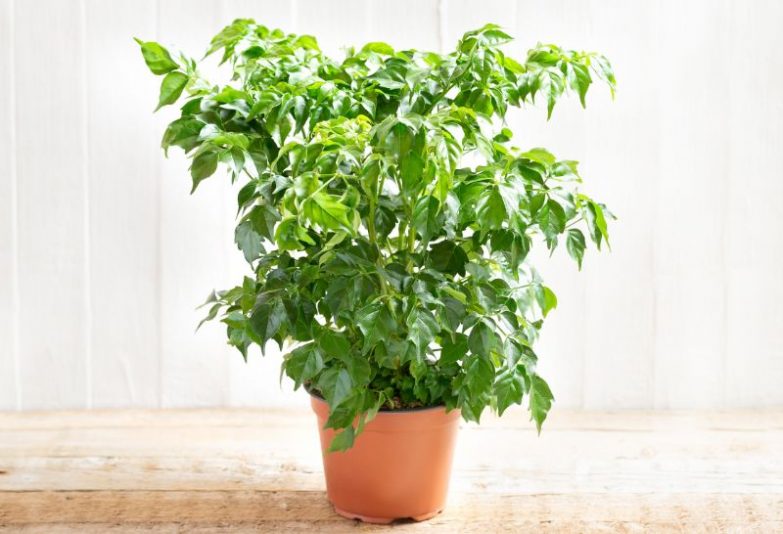The glossy China Doll Plant seems unsure if it wants to be a touchy tropical houseplant or a robust and fast-growing outdoor tree – because it’s both. Though it’s known for dropping leaves easily, the plant will thrive indoors with regular pruning and proper care. In this article, we’ll explain everything you need to know about China Doll Plant care to keep this warm-season evergreen happy and looking its best.
Summary of Caring for a China Doll Plant: A China Doll houseplant needs warm temperatures and lots of bright indirect light. It requires moist soil but can’t tolerate wet feet. They can handle average indoor humidity but drop leaves from stress or environmental change. Moderate fertilization is sufficient, but they need pruning to stay compact.
Overview Of The China Doll Plant (Radermachera sinica)
The China Doll has been available as a landscape tree for decades, but it was only adopted as a houseplant in the 1980s. It became popular for its attractive dark green foliage that stays glossy even in the dry air of heated homes, and because it stays compact and well-filled with routine pruning.
The plant originated in subtropical regions from North India to Southern China and Taiwan. Outdoors the China Doll can reach 90 feet high or more, but it stays much smaller in an indoor container.
The plant is named for the glow of its shiny, lightly textured leaves. China Doll plants have a rounded, upright growth habit and woody stems. Though they seldom flower indoors, a mature outdoor China Doll tree bears white, scented clusters of blossoms for several months each year: they bloom at night and drop their brief petals in a shower each morning.
If you’d like to buy one, you can get a China Doll Plant online from Etsy. (I buy most of my houseplants from Etsy).
Life In A Container
It’s important to remember that your China Doll houseplant is actually a baby tree. It does fine in a container and even likes to be a bit rootbound, but a potted specimen grows differently than when planted outdoors.
The tree form tends to be fast-growing, deciduous, and hardy. Once in a container, the plant acts like a tender tropical: it wants consistently moist soil that never becomes sodden and bright indirect light. China Doll plants grow more slowly in a pot, too, but you’ll still need to prune it consistently to maintain its bushy shape.
Note: Some nurseries put growth regulator into a China Dolls’ soil to keep the stems short; as the hormone diminishes, the plant begins to develop a looser structure if you don’t intervene with regular trimming.
The main challenge with keeping a China Doll as a houseplant is its tendency to drop leaves from stress or a change of conditions. Water issues, cold temperatures, a draft, change of location, or a simple repotting can all trigger significant shedding. You can prune back bare branches to retrieve growth, but this annoying habit bumps the plant from a beginner to an intermediate challenge.
Also, if you’re a smoker, a China Doll plant may not be the best choice. The plant has a reputation for disliking cigarette smoke: their leaves can turn brown and/or languish after exposure.
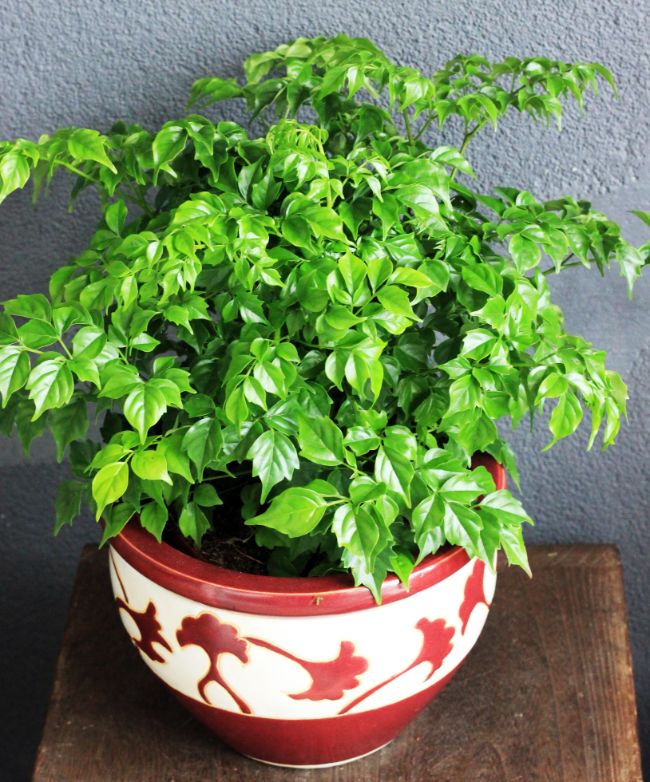
Supply Plenty Of Indirect Light
China Doll trees living outside thrive in full sun, but they can be a little more sensitive to direct sunlight when grown indoors. They prefer four to five hours of strong indirect light; they can tolerate less but grow faster and more thickly in strong illumination.
You can successfully grow your China Doll Plant in brighter spots indoors, with more direct sunlight, but take care not to suddenly increase lighting, as this can result in leaf scorching.
A southern exposure with protection from intense rays is a good choice. Sheer curtains can work, or you can move the pot a few feet back – don’t move it too far away, though; light intensity drops quickly with distance from a window. A bright east- or west-facing window with some morning or late afternoon sun is also a good location.
A China Doll’s container can be put outside in filtered light over the summer. Expect some leaf shedding from the move – both outside and back in – but the plant’s overall gains in growth and condition can make up for its losses.
The plant responds well to artificial illumination, so it’s easy to bump up the available lumens with a simple grow light. They can do well under bright fluorescents, too. Their growth slows down over the winter as they receive less light, but they’ll grow year-round with supplementation.
How To Water A China Doll Plant
There’s a slight balancing act involved in watering a China Doll plant. They aren’t as demanding as some sensitive plants can be, but they have their demands. China Dolls don’t want their soil to dry out … or to sit in soggy soil, either.
Incorrect watering is probably the most common mistake growers make with this plant. Read this article about how to tell when to water your houseplants for some handy tips.
You want to avoid overwatering most of all: the plant is susceptible to root rot and can’t survive in soil that stays too wet. Black tips on leaves are a sure sign of an overwatered China Doll plant.
Only water when the top inch of soil dries out. Room temperature water is best to avoid stressing their roots.
You’ll have to monitor the soil to keep the right moisture level. If the plant is rootbound, periodically check the soil with a wooden chopstick or skewer – you want to make sure water is penetrating into the center of the rootball. If the soil dries out, it can actually repel moisture. Soak the soil thoroughly each time you water.
Well-draining Soil
A light, well-draining soil is best. Using a mixture that holds moisture but doesn’t become sodden and compact is the easiest way to maintain the correct watering balance.
China Doll plants don’t need anything fancy, though. A quality retail potting soil is fine. A mix with peat moss is usually suitable … if the medium needs more drainage, add perlite, coarse sand, or another aerating amendment. Read more about choosing houseplant soil here.
While China Dolls aren’t hypersensitive to chemicals in the soil, they don’t like heavily mineralized or “softened” water sources.
Also, because they prefer staying in one container for several seasons, their soil can suffer a buildup of residual fertilizers. The excess salts can cause leaf tip burn and other problems, so flushing the soil with excess water every month or so is a good practice.
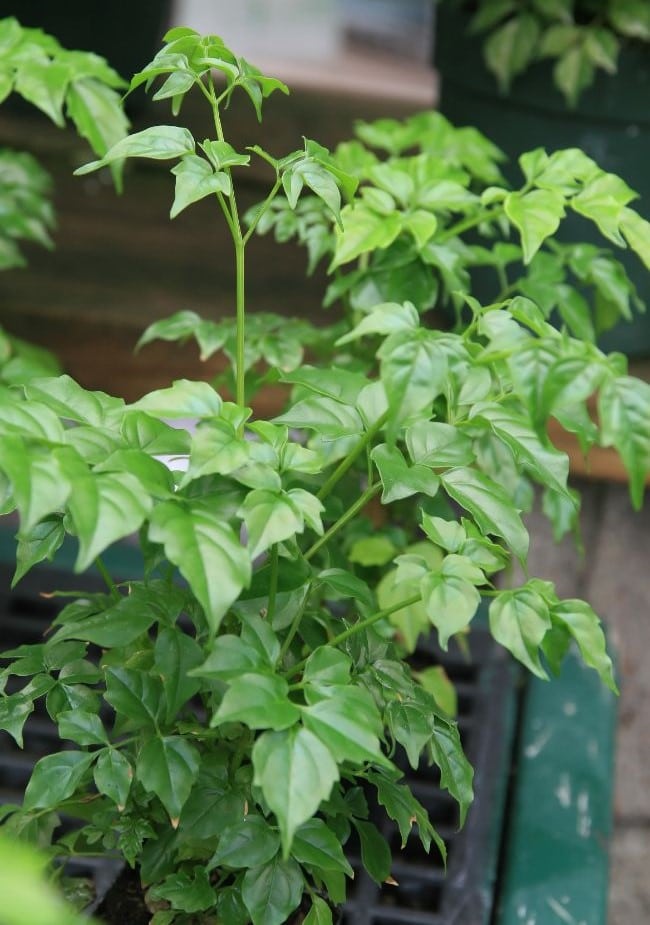
Average Humidity Is Okay
While your China Doll plant appreciates humidity, it can tolerate the drier air of most homes. They may struggle in the arid conditions caused by indoor heating in the winter, however.
Overall they thrive best at 40% to 50% humidity.
Misting isn’t much help in raising humidity for more than a few moments, but there are easy ways to modestly increase moisture levels. Grouping your plants conserves the moisture they naturally transpire from their leaves. Don’t crowd them, though. Preserve some space for air circulation.
The classic method of putting a pebble-filled water tray near the plant or under its pot will also slightly raise humidity. Just make sure the soil isn’t in contact with the water. Read more about how to increase humidity levels for your houseplants here.
Temperature Range For China Doll Plants
The subtropical China Doll Plant is hardy outdoors in USDA Zones 10 to 12. Though it’s a bit more temperamental as a container plant, it’s quite happy in normal room temperatures from 65ºF (18ºC) to 75ºF (24ºC).
China Doll plants can tolerate some higher temperatures during the day, but they may start dropping leaves if it gets much above 82ºF (28ºC). Its water demands can be much higher in hot weather, so keep an eye on the soil as the temperature rises.
Cold weather is another story. The plant is very frost tender and will start to suffer if the thermometer dips below 50º (10ºC).
Be sure to avoid hot or cold drafts, either of which can trigger dramatic leaf shedding.
How To Fertilize A China Doll Plant
Though it’s a seasonal tree when grown outdoors, a potted China Doll plant will stay green all year long.
Many growers use a balanced fertilizer with a 10-10-10 or similar NPK ratio. A little extra nitrogen can support foliage growth, but don’t go overboard: too much nitrogen can increase legginess.
A good fertilization method is to feed monthly with a ½-diluted formula. Alternatively, some growers add a slow-release fertilizer twice yearly. Taper off feeding during the winter. Read more about how to fertilize houseplants here.
Unlikely To Flower
As a mature outdoor tree, the China Doll plant blooms in fragrant clusters high up in its branches. The short-lived blooms open at night and drop the following morning.
The plant doesn’t typically flower indoors, however … though older specimens have been known to produce transient blooms.
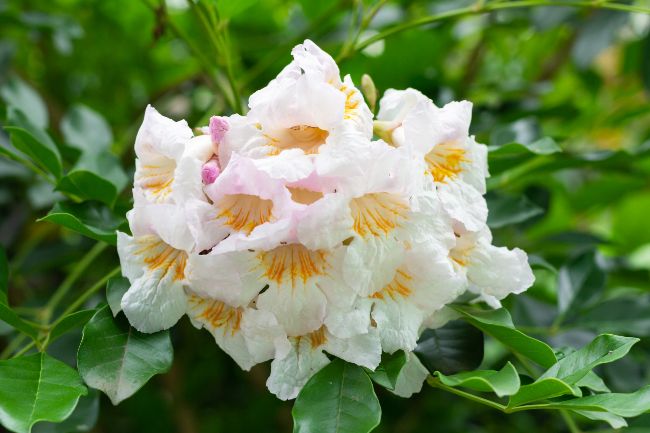
Repotting A China Doll Plant
As mentioned, China Doll Plants don’t like change and express displeasure by disrobing their leaves all over the floor. Being repotted is at the top of their list of unwanted changes.
On the plus side, they don’t mind being a little rootbound, so most growers indulge them with some extra time in old quarters. They can wait for several years between repots with no adverse effects.
Repotting has to be done sometimes, however, if for no other reason than their roots have consumed their container’s soil. One general rule is to repot once the plant requires watering more frequently than twice a week.
Here are some tips to make it less stressful for the plant – and for you:
- Don’t repot unless your plant is already acclimatized to its location.
- Only increase the pot one size: an inch or possibly two in diameter.
- Make sure the container is heavy enough to counterbalance top growth.
- Gently tease out the rootball’s sides so it can easily grow into the new soil.
- Add potting mix to the sides and underneath the root system—never add dirt on top of the soil line.
- Be especially attentive to watering after repotting. Until roots grow into the new soil, the empty space holds moisture for a longer time and may trigger rot.
- Expect leaf drop. Don’t panic. You can cut the plant back to regrow the lost foliage after it settles down.
- Don’t fertilize for a few months after repotting so that the tender new roots can grow without danger of chemical burning.
- If your China Doll is the size you want, you can prune its roots and repot it in the same sized container. With proper care it will bounce back.
- Read more about repotting rootbound houseplants here.
Regular Pruning
Since you’re basically keeping your potted China Doll plant indoors as a perpetual baby tree, you’ll need to prune regularly to keep it bushy and compact. China Dolls respond well to trimming, however, and are easy to maintain with some routine attention.
Don’t procrastinate: The trick is to trim your plant before it looks like it really needs it. You can cut them back to any height. Prune dead or bare stems back to the main trunk.
New growth comes from the tips of a stem. Prune a branch down to the place you want a fresh start. Cut a half-inch above a leaf – even cutting back one inch will promote new growth. It’s best to leave some foliage on the stem to help it recover.
You can prune creatively to encourage the look you want. For more thickness, trim stems that point inward so they will branch and fill in the space. Cut back errant, outward-growing branches … or, if you want a more open style, cut back the inner-facing stems instead.
Often you’ll notice one stem feels the need to sprint ahead and dominate the others – simply trim back each new growth spurt.
Outdoor trees are best pruned in the spring or early summer, but an indoor houseplant can be trimmed anytime. Monitor the soil closely after a major trim, because the loss of foliage can result in less water use.
How To Propagate A China Doll Plant
Seeds and stem cuttings are the main ways to propagate a China Doll plant – but there’s an easier way if you get lucky and have multiple stems. Nurseries often put several slender stems in one pot to make it look full, and mother plants also produce separate shoots. These individual plants can be teased apart and replanted.
For regular propagation, look to growing seeds or rooting stem cuttings:
Growing From Seed
The first issue with seed propagation is finding a reputable source. If you have an outdoor China Doll tree that flowers, you can wait until the blooms fade and collect the long seedpods after they’ve dried.
The seedlings are prone to damping off disease, so a fungicide soil drench is recommended. Germination is best done in warm temps from 80ºF (27ºC) to 85ºF (30ºC). Cover the planting tray with clear plastic to aid humidity and conserve soil moisture.
Give the young plants bright indirect light. After the first true leaves appear, harden them off by removing the plastic cover for short periods until they can tolerate the normal environment.
Stem Cuttings
Even young China Doll Plants have woody stems that can be difficult to propagate. Time is of the essence because it’s a race to get your cutting to produce roots before it rots.
- Make four-inch cuttings of green stem tips. Remove lower leaves.
- Insert cuttings into the moistened potting mix and cover with clear plastic. Some growers dip the ends into rooting hormone first.
- Place the cuttings in bright indirect light and maintain soil moisture.
- Roots should appear in three to four weeks. Gradually harden rooted seedlings by removing the plastic for increasing intervals.
- Once a root system has developed, pinch off the top of the stem to encourage branching.
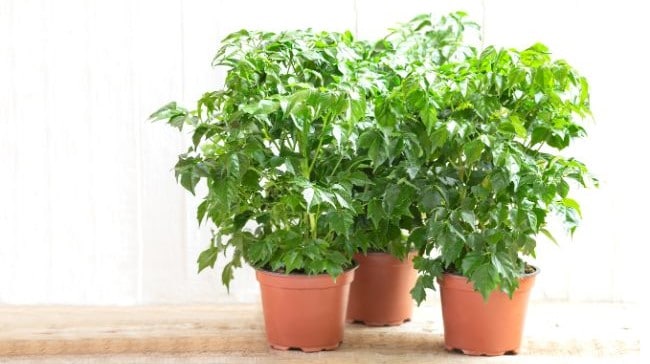
Tips For Planting A China Doll Plant
- It’s important to put your China Doll plant in a suitable spot and leave it there. If you move them around too much they decline.
- Expect your China Doll plant to shed leaves after you bring it home until it acclimatizes.
- A China Doll plant can come back strong after shedding leaves once it’s adjusted to conditions or its stress has been remedied. Consider cutting back bare limbs to make way for new growth.
- One small routine change you can make is to rotate the plant each time you water to keep its growth well rounded.
- The plant can struggle with dryness in the heated air of winter. If this is happening, try to increase humidity and don’t let its soil get too dry.
- It’s fine to take the plant outside or into the shower for a quick spray down. Do this at watering time, and put it back once it’s drained.
China Doll Plant Varieties
China Doll plants are the most popular of about 17 species of Asian Radermachera. The plant is also commonly called an Emerald Tree or Canton Lace.
Radermachera ‘Kunming’ is a recent arrival known as a Dwarf Tree Jasmine. It tends to flower more readily than potted China Dolls.
There are also a few rather uncommon varieties, including a yellow-green variegated cultivar called the Crystal Doll. Dwarf varieties often called Asian Bell Trees are available and becoming more popular.
Toxicity
China Doll Plants are non-toxic and won’t harm your pets or children, though they may cause stomach upset if eaten in quantity.
Pests And Diseases
Your China Doll plant is prey to common pests like aphids and other sucking creatures. They are susceptible to mealybugs and spider mites.
Inspect under the leaves regularly for early signs of infestation. Regular showers help knock down spider mites and other potential pests. Isopropyl alcohol can be dabbed on individual invaders if there’s only a few.
If you see a bigger problem, insecticidal soaps or horticultural oils are effective, low-impact solutions that won’t overstress the plant. Coat the leaves to cover any burgeoning colonies—these treatments must come into direct contact with the pests to be effective. Repeat every three to six days until the infestation goes away.

